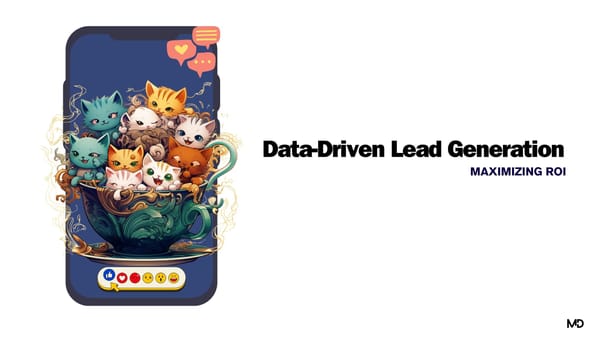Strategy vs Tactics - Don't Get Them Mixed Up

In the rush of getting things done, mixing up the terms "strategy" and "tactics" is a surprisingly common problem.
But this seemingly small oversight can have significant consequences for businesses, teams, and personal goal-setting.
71% of the fastest-growing companies have a strategic plan. However, a shocking 67% of B2B marketers lack a clear, documented content marketing strategy.
What is Strategy?
- The 'Whys' and 'Whats': Strategy outlines the overarching vision, WHY you're doing something, and the specific goals or outcomes you wish to achieve. It's your roadmap charting a course of action designed to lead you to a predetermined destination.
- Long-Term Perspective: Strategies tend to be broad and far-reaching. They provide a foundational framework guiding decisions even after circumstances might change along the way.
What are Tactics?
- The 'Hows': Tactics are the specific actions you take to execute your strategy. They're the tools and techniques that move you from ideas to implementation.
- Action-Oriented & Adaptable: Tactics are generally focused, can be short-term in nature, and often evolve within your larger strategy's framework.

Strategy and Tactics: Working in Tandem
Think of your SaaS marketing efforts as a puzzle. Here's how strategy and tactics form the essential pieces:
- Strategy is Your Puzzle Picture: It's the overarching goal, your company's intended positioning within the market and who you aim to serve. Example strategic goals include:
- Increasing brand awareness among tech-savvy startups.
- Establishing yourself as the go-to solution for data analytics within a specific niche.
- Boosting your free trial to paid conversion rates.
- Tactics are the Puzzle Pieces: These are your step-by-step actions. Think of each piece locking together to form the whole. Tactical choices include:
- Content marketing aimed at addressing common pain points your ideal customers face.
- Partnering with industry influencers to gain targeted audiences.
- Launching limited-time discount offers to nudge your 'on-the-fence' trial users.
Why Strategy and Tactics Matter Together
Just brainstorming clever marketing tactics without a larger strategy behind them is like scattering your puzzle pieces on the floor - lots of potential, but not a clear final picture.
- Direction and Purpose: Your strategy is your guiding star. It keeps tactical choices focused on your larger goals rather than just being "busy" with marketing tasks.
- Adapting to Successes and Failures: Tactics often have measurable wins or misses. This data informs refinements to the strategy itself for constant improvement.
- Staying on-Brand: Each tactic, from your website's tone of voice to your social media style, must reflect your core strategy to maintain a cohesive customer experience.

Real-world Applications of Strategy vs Tactics
Let's dive into some real-world business scenarios where the strategic and tactical interplay drives growth and decision-making.
Scenario 1: Product Launch
- Strategy: Introduce a groundbreaking new feature within an existing software offering, aimed at solidifying market dominance in a specific sector.
- Tactics:
- Conduct beta-testing with existing users for early feedback on feature usability
- Launch partner program offering early access and exclusivity deals to influential clients.
- Create content demonstrating real-world case studies where this feature solves crucial industry pain points.
Scenario 2: Company Rebranding
- Strategy: Pivot from a perception of generic services to a highly innovative, results-focused brand within a competitive market.
- Tactics:
- Develop a new logo, visual identity, and brand voice guidelines.
- Overhaul company website and marketing collateral to strongly reflect the refreshed brand.
- Execute a strategic PR campaign emphasizing client success stories, rather than just general company services.
Scenario 3: Expanding Sales
- Strategy: Capture market share in a new territory by focusing on building client relationships rather than relying purely on direct advertising.
- Tactics:
- Attend industry tradeshows and networking events specific to the targeted region.
- Develop localized case studies demonstrating success with companies similar to those operating in the new territory.
- Invest in training existing sales teams in cultural nuances and language basics to create deeper connections with prospective clients.
Scenario 4: Enhancing Customer Experience
- Strategy: Develop a reputation for customer satisfaction excellence within a highly competitive field.
- Tactics:
- Implement real-time chat support on the website to immediately address customer issues.
- Create onboarding resources and FAQs that empower customers to find answers effectively and minimize friction in their journey.
- Develop a transparent feedback system enabling customers to influence future product updates or service improvements.
In each of these examples, having a defined strategy informs purposeful tacticals choices. Tactics that operate without this strategic guide might yield minor wins, but won't deliver the kind of transformational results your business seeks for ongoing growth.

Why Mixing Them Up Hurts Your Results
Confusing strategy and tactics have real, negative consequences for achieving your goals. Companies where strategy and tactics don't align often report weaker financial results. Here's why:
- Tactics Without Strategy = Aimless Action. Working hard doesn't equal working smart. Random activity may create buzz, but it won't necessarily make meaningful progress toward your ultimate objectives. It's like running at full speed on a treadmill – exertion without moving forward.
- Strategy Without Tactics = Unrealized Potential. Brilliant ideas and lofty goals aren't enough. Without specific plans to act on your strategy, it's a daydream, not a path to actual results. Like having a stunning architectural plan, but never making an effort to build.
- Strategy Overly Rigid = Lost Opportunities. Business doesn't exist in a vacuum. Unforeseen opportunities arise, competitors make shifts, and markets change. Overly rigid adherence to your initial strategy without room for tactical adjustments leads to missed chances and lost advantages.
Key Takeaway: The relationship between strategy and tactics is dynamic and requires balance. Without a defined strategy, you're unmoored. Without well-planned tactics, you never leave the harbor. Overemphasis on either side derails your success.
Getting it Right
When creating any plan, always ask these questions to keep those distinctions front-of-mind:
- What is the overarching goal and desired outcome? (This is strategic)
- What specific actions or steps will help me get there? (These are tactical)
- Am I being overly fixated on one aspect while neglecting the other?
The Ultimate Lesson
Whether you're managing a massive corporation or aiming for personal growth, clearly differentiating between those broad goals and the steps to achieve them is critical.
When harnessed well, strategy and tactics propel you towards consistent wins instead of confusing activity with true progress.





